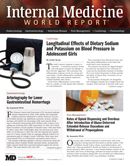Publication
Article
Acne Medication Non Adherence Prevalent in Patients
Author(s):
About a quarter of patients with acne did not fill prescriptions, according to a survey published in JAMA Dermatology.

More than 25% of patients surveyed didn’t fill medications prescribed by their dermatologists, and adherence was improved when there was only one medication prescribed, according to findings published in JAMA Dermatology.
Researchers from Wake Forest Baptist Medical Center reviewed medical records from an outpatient university dermatology clinic of patients with acne diagnoses. The researchers aimed to estimate acne treatment primary non-adherence rates and to determine the relationship between primary non-adherence and the number of acne treatments prescribed.
The patients had been prescribed one, two, or three or more treatments within the past three months. The patients were surveyed via telephone by the research team about their obtained acne treatments, but were disqualified from the study if they did not speak English, were not prescribed treatment for their acne, or did not have a telephone number.
The researchers asked participants what acne treatments they obtained and how many they were prescribed. There were 47, 48, and 48 eligible patients who were prescribed one, two, or three or more treatments, respectively.
Researchers discovered that approximately one quarter (27%) of patients surveyed did not fill all of their prescriptions. And those who were prescribed one, two, or three or more treatments did not fill all of their prescriptions at a rate of 9%, 40%, and 31%, respectively.
“Non adherence is a pervasive problem in all of medicine, particularly when treating chronic conditions such as acne,” the study’s lead author Steven R. Feldman, MD, PhD, professor of dermatology at Wake Forest Baptist, said in a press release. “A previous study reported a 10 percent primary non adherence rate for acne patients, so we were surprised that what we found was more than twice that.”
Prior research had demonstrated that treatment outcomes depended on adherence to the prescribed regimen, but the frequency of primary non-adherence specifically to acne treatment had not yet been well characterized, according to the researchers. They aimed to navigate the unexplored territory of adding more than one prescription regimen, which can compound the problem of non-adherence.
The secondary analysis, the researchers commented, was to include the association of sex, age, medication type, and electronic prescription status with primary non-adherence. The researchers wrote there was no statistically significant difference by sex or age for primary non-adherence in any of the treatment groups, either prescribed one, two, or three or more medications.
“The study showed that patients are more inclined to follow the treatment regimen when only one medication is prescribed,” Feldman continued. “Multiple agents are typically required to address the multiple factors that cause acne, but simplifying treatment regimens by prescribing products that contain two or more active ingredients could prove effective in reducing non-adherence.”





